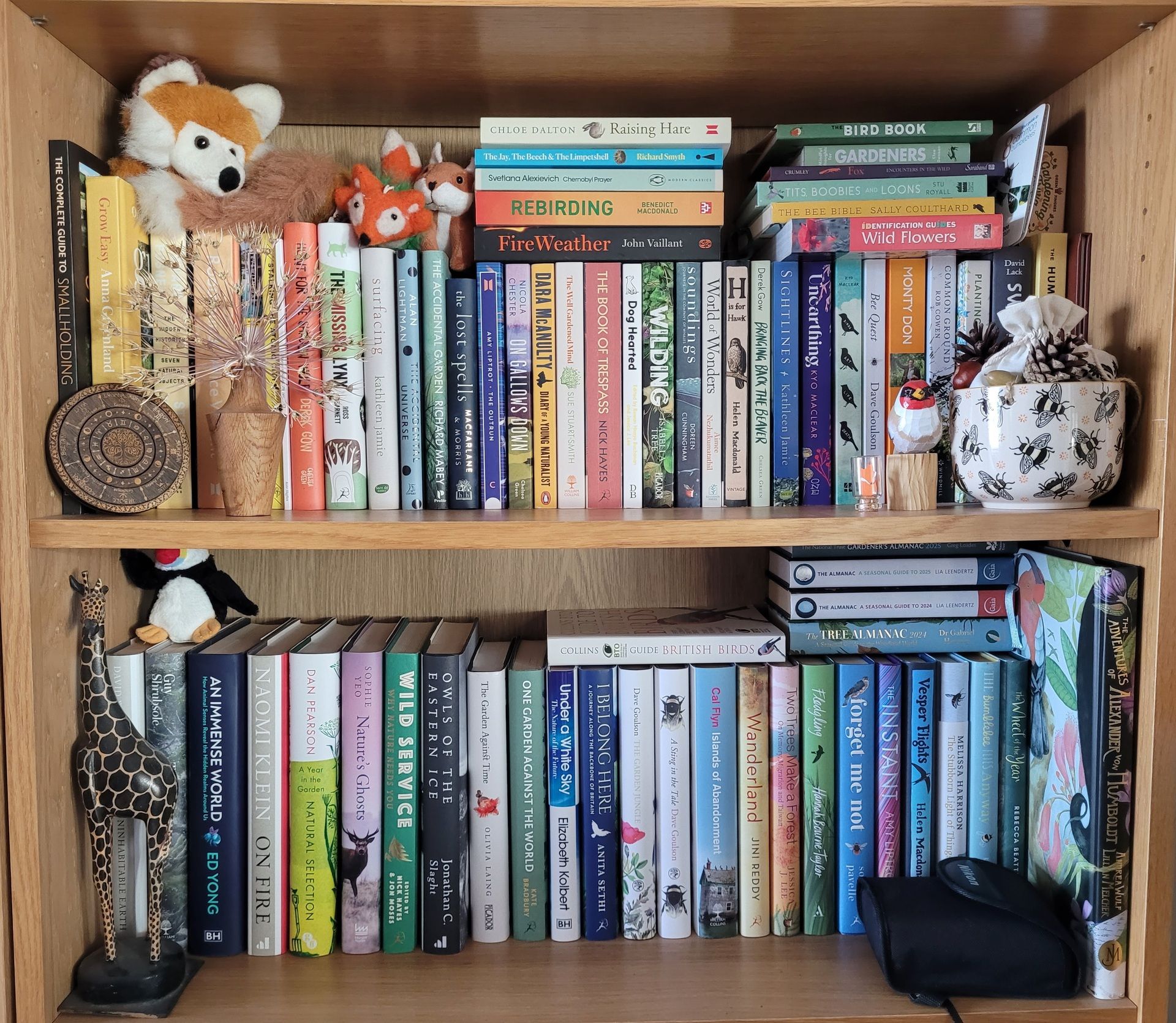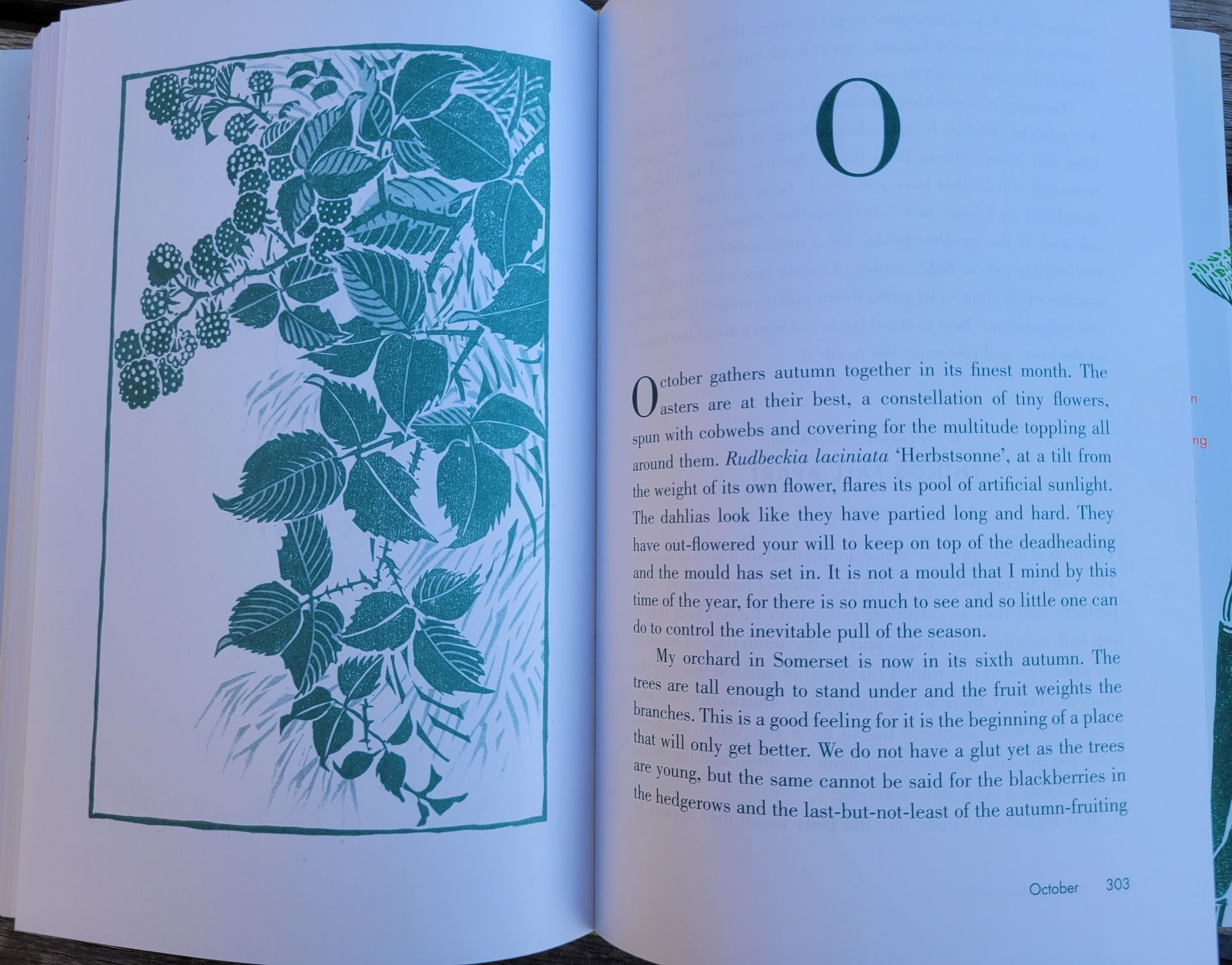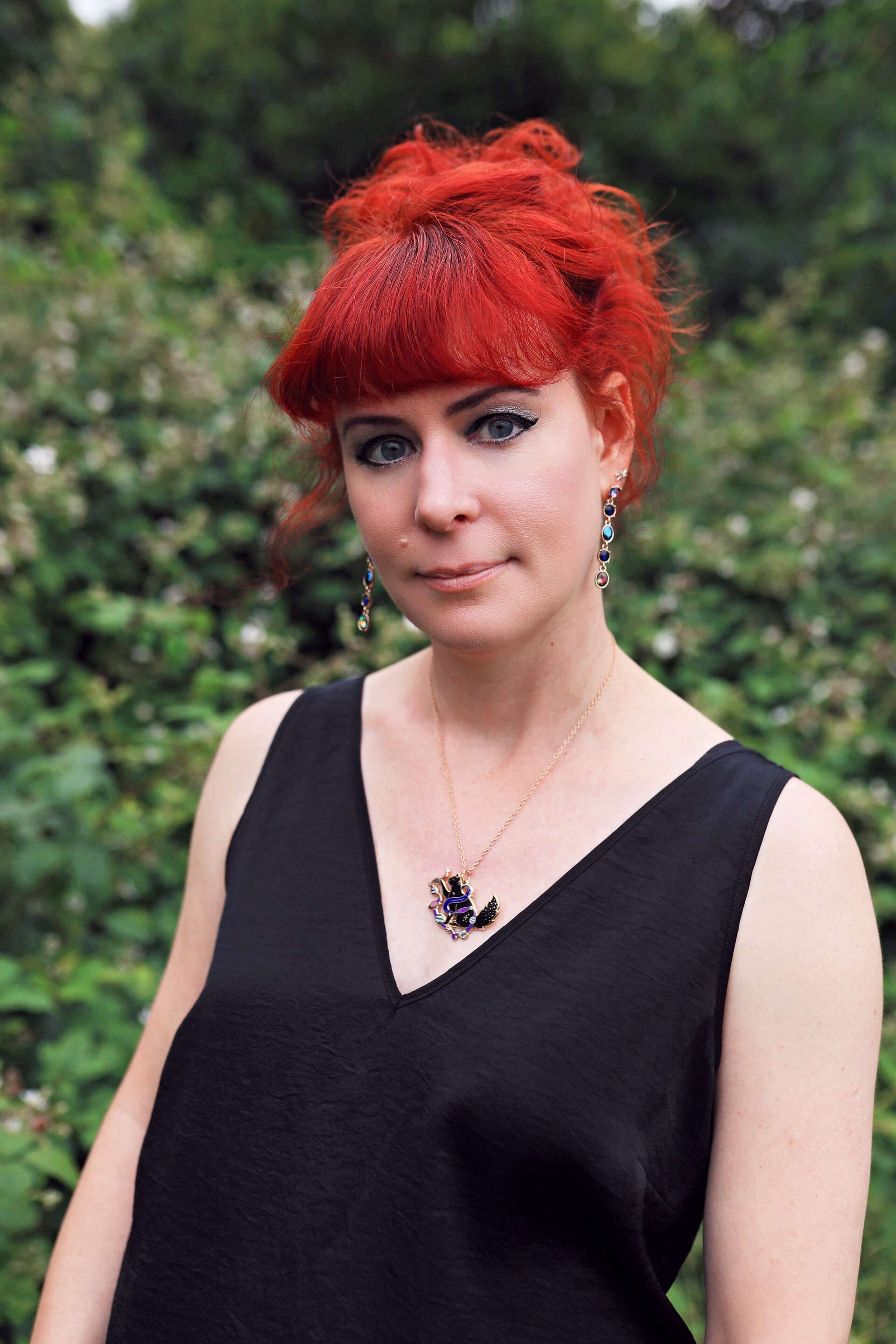- Shelfies
- Posts
- Shelfies #56: E.J. Swift
Shelfies #56: E.J. Swift
These shelves are also where my binoculars live so I can grab them quickly if I spot someone interesting on the bird feeder.

E.J. Swift’s Shelfie
My chosen shelves can be loosely grouped under nature writing, with some books here acquired for pleasure, others for research, but today I’m picking out titles on a subject particularly close to my heart: gardens and gardening. As well as accumulating various paraphernalia (foxes, gifted over the years; a little wooden vase, also a present, with a dried allium head from my own garden; a miniature wheel of the year), these shelves are also where my binoculars live so I can grab them quickly if I spot someone interesting on the bird feeder.
On the lower shelf is Natural Selection: A Year in the Garden by garden designer Dan Pearson, whose sentences about plants are as lyrical and evocative as his perennial/prairie-style landscapes. This collection is grouped by calendar month, and so I read the book incrementally, over the course of a year, in line with the seasons. Both the text and the illustrations are printed in dark green.

Dan Pearson’s Natural Selection: A Year in the Garden
Along to the right, Kate Bradbury’s One Garden Against The World is a joyous and defiant reminder that small acts can make a big difference, whilst Olivia Laing’s The Garden Against Time, read this summer, reflects on the slow and meditative work of building and restoring a garden, and their role and symbolism through literature and history. One line, referring to a garden during the second world war, has stayed with me: “Perhaps it is enough in wartime for a garden simply to exist; a signed affidavit that there are other ways of spending a life, that generosity, gentleness, cultivation also count, despite their perpetual vulnerability.”
A couple of books along, Dave Goulson’s The Garden Jungle has given me some practical ways to garden with exactly that generosity and gentleness, encouraging insects and wildlife to share the space I look after. On the shelf above, loitering behind the allium, Alice Vincent's Rootbound struck a chord on how to be green-fingered in an urban world. And over to the right, in her tender and compassionate memoir Unearthing, Kyo Maclear has to learn her mother's indirect, nebulous language of gardening in order to understand a long-kept family secret. I haven’t yet got to Richard Mabey’s The Accidental Garden, but I like the way it’s ended up perched next to The Accidental Universe, in a happy coincidence of non-standard hardback height.
Also on the upper shelf, an unusual square-sized edition with a red spine, Identification Guides: Wild Flowers. This is the oldest book on the shelves and one of two items salvaged from the belongings of a great-aunt who passed away some years ago, the other being a ceramic mug with a lovely wren design. Aunty Betty, as she was known to us, was not close with my immediate family, and I met her only a handful of times. But these two items suggest to me that we had some shared loves, a reminder of conversations that might have been, and the way passions can leap across generations, and find new shoots.

E.J. Swift
E. J. Swift is the author of six novels including The Coral Bones, which was shortlisted for the BSFA Award for Best Novel, The Kitschies’ Red Tentacle and the Arthur C. Clarke Award. Her latest novel, When There Are Wolves Again, publishes on 9 October. She lives and works in London.
Shelfies is edited by Lavie Tidhar and Jared Shurin.
Join us on Instagram @shelfiesplease.
Reply